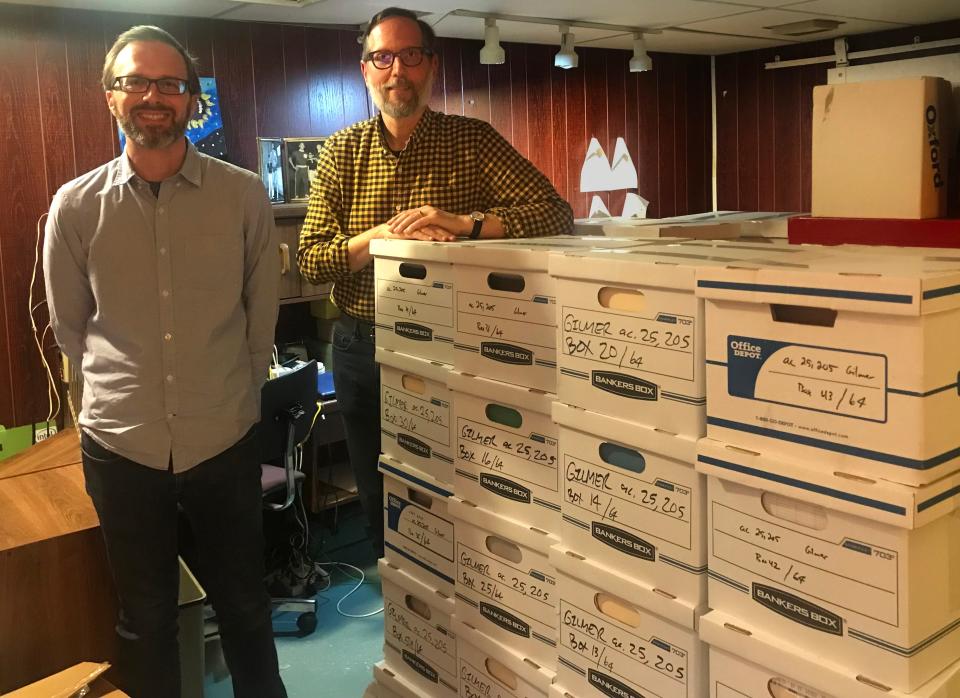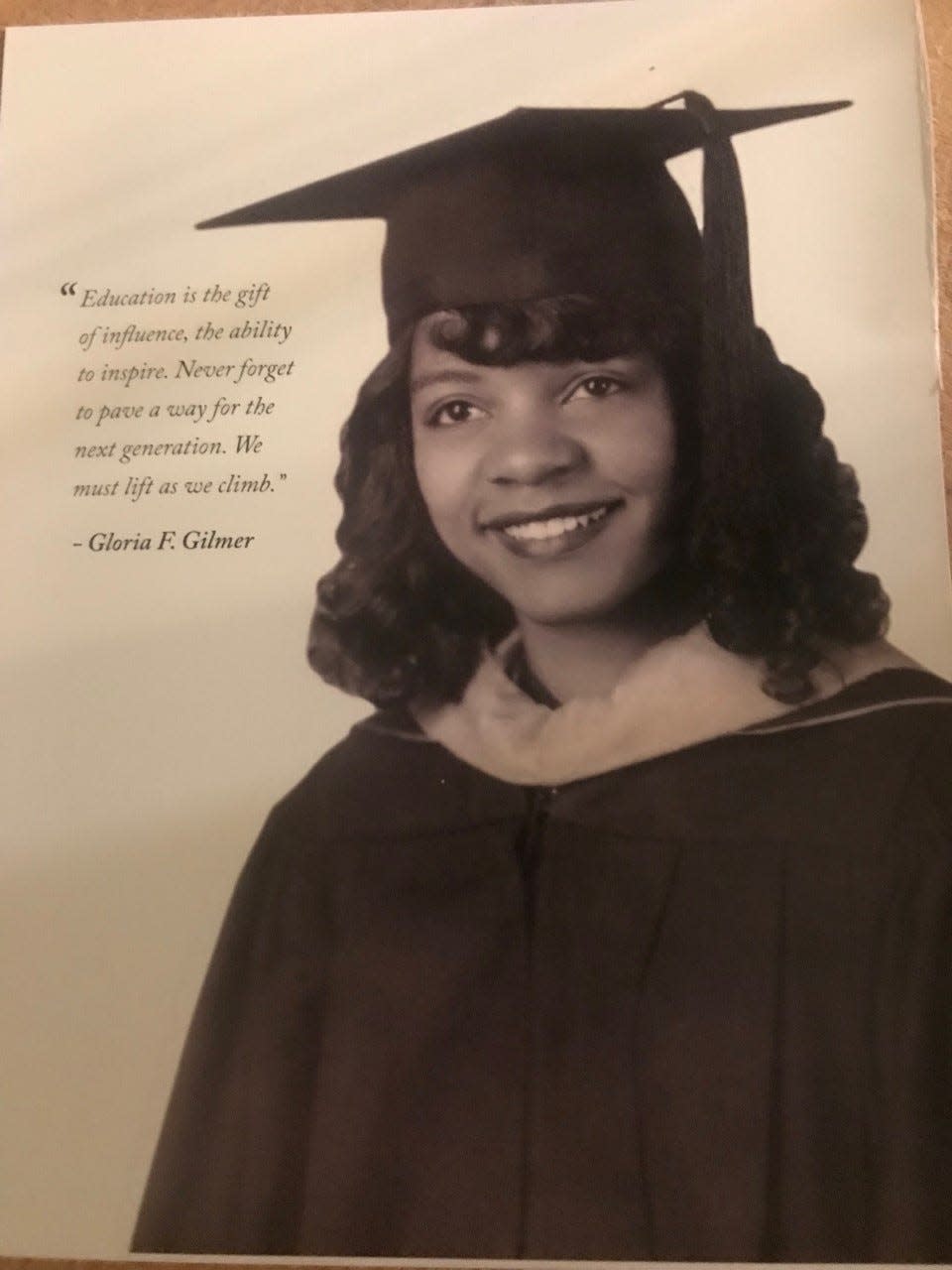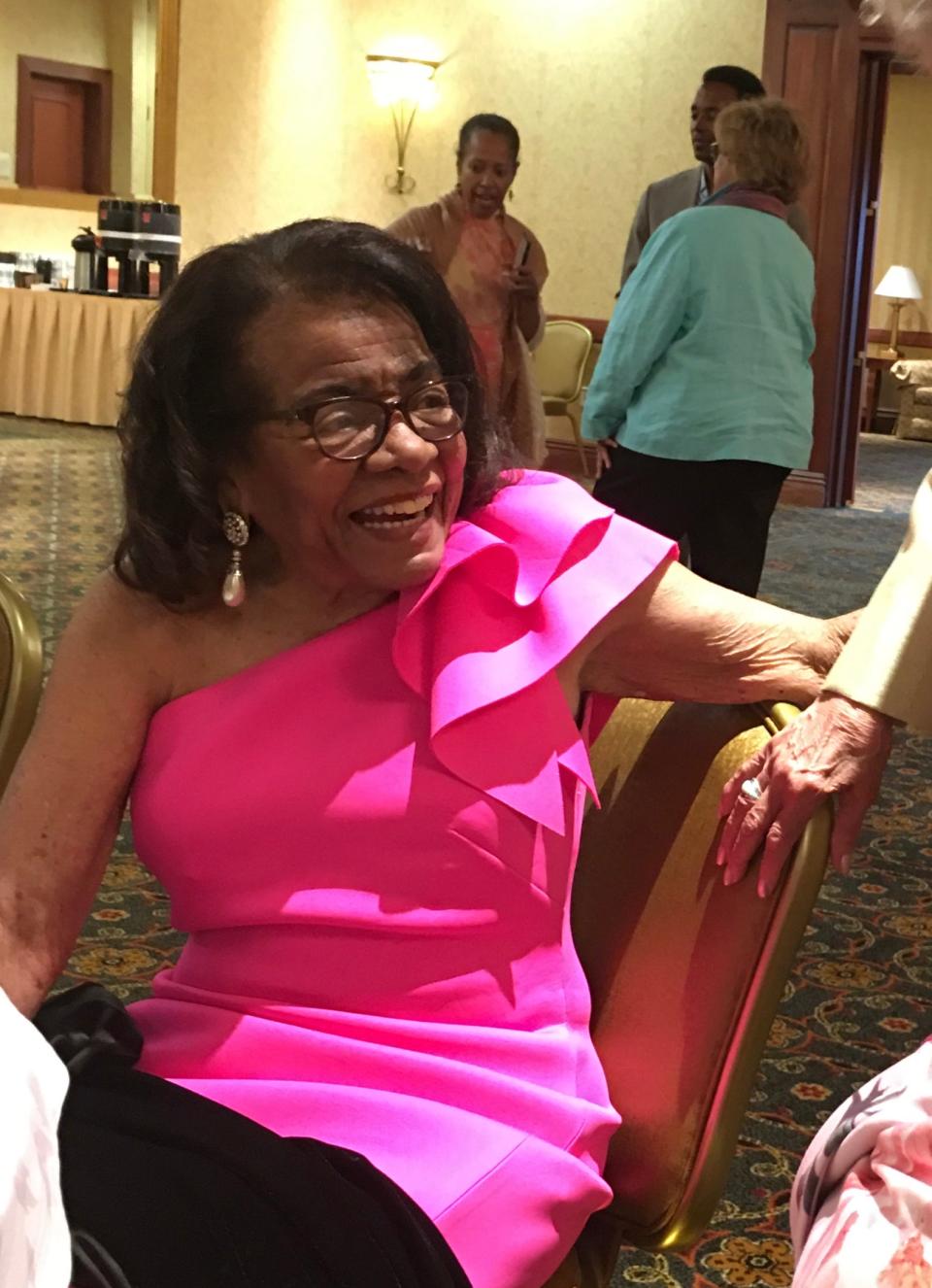Milwaukeean becomes first Black woman mathematician to have her papers in Library of Congress manuscript collection
Gloria Ford Gilmer ― a former Milwaukee teacher, international researcher and leader in the field of ethnomathematics ― has become the first Black woman mathematician to have her research papers and other documents maintained in the Manuscript Division of the Library of Congress.
Through decades of teaching, research and advocacy, Gilmer, who died in August 2021 at the age of 93, humbly and unwaveringly inspired generations of students in Milwaukee — and around the world — to realize what she called their "mathematical power."
She spent her career working to expand culturally-inclusive ways of teaching math, motivated by the core belief that anyone can be good at it if taught in a way that is relevant to their life experiences. She saw math everywhere, even in the twists of Black women's braids.
Gilmer was regarded by many who knew her as Wisconsin's "hidden figure," a reference to the 2016 movie about a group of Black women mathematicians whose work for NASA amid the Jim Crow era made U.S. spaceflight possible, but went largely unrecognized until recent years.

Among the many "firsts" on her resume: Gilmer was the first African American to teach high school math in Milwaukee Public Schools; to join the math faculty at Milwaukee Area Technical College, where she taught for 14 years; to be a math lecturer at the University of Wisconsin-Milwaukee; and to earn a doctorate from Marquette University's education school. She also was the first Black woman to sit on the Board of Governors for the Mathematical Association of America.
She said her field of ethnomathematics was "the mathematics of the people." Ethnomathematics examines how math manifests itself in the daily lives of various world cultures, a question that took Gilmer around the world — from Hungary to Brazil to China to Egypt to Australia.
Josh Levy, a historian of science and technology at the Library of Congress' Manuscript Division, reached out to Gilmer's family through the Journal Sentinel after reading her obituary on its website, jsonline.

In June, his team spent two days working through the documents stored in the basement of her daughter's home, ultimately identifying 64 banker's boxes worth of Gilmer's documents, including digital files, photographs and VHS tapes. They will be kept at the library in perpetuity, available for historians to examine, and potentially for the library's educational efforts.
The library's Manuscript Division maintains approximately 12,000 collections. Gilmer is the first Black woman mathematician to have her papers kept in the division, part of an overall effort to add more women and people of color to the math, science and technology collections.
Levy said it's a common issue with a lot of archival collections that people who are powerful and visible have an easier time having their papers preserved. But historians want to know about more than just the work of the world's richest mathematicians, or the ones who got the most widespread attention, he said.
Because Gilmer kept so many of her documents, including detailed daily logs of her work, ideas and the people she interacted with, Levy hopes the documents will give historians insight into her life and the broader field she worked in.
"We think it's significant that her work involved working to empower so many other people to do similar kinds of work," Levy said. "It's about her, but we're also looking to document the community that she made around herself."
Gilmer's daughter, Jill Gilmer, said that at her core, her mother was a teacher, one who wanted to improve education for all students.
That's the common theme in her writing, which includes a 1998 article on ethnomathematics, in which she called on schools to think about the needs of all students, not simply the desires of the most influential parents, who often are "predominately white, middle-class parents of high achieving students."
She challenged the idea that math education is culturally neutral as-is, and she used an example of a simple word problem: "It costs $1.50 each way to ride the bus between home and work. A weekly bus pass is $16. Which is the better deal, paying the daily fare or buying the weekly pass?"

"On the one hand, test designers assumed that only one person would use the bus pass, the pass would not be used on weekends, and that the person had only one job," Gilmer wrote. "On the other hand, many African American students assumed three or four people may use the same pass at different times of the day or on weekends; or, that if one person used the pass he or she could have two jobs. Since situational mathematics is almost always culturally based, in multicultural settings care must be taken to include cultural assumptions in the statement of the problem."
Jill Gilmer noted the issues her mother talked about remain relevant in education debates today. How can schools help more Black students succeed in math and science? How can culturally-relevant teaching help all students feel like they belong in the classroom?
She said her mother never chased fame or prestige.
"She didn't really care that much about what other people were thinking about her," she said. "She just did what she thought was right, and that she was passionate about."
Now, the Milwaukee mathematician's work will live on in the largest library in the world, alongside other notable Black women including suffragette Mary Church Terrell, educator Nannie Helen Burroughs, civil rights leader Rosa Parks, psychologist Mamie Phipps Clark, politician and diplomat Patricia Harris, and children's author Virginia Hamilton.
"I'm just over the moon," her daughter said.
Our subscribers make this reporting possible. Please consider supporting local journalism by subscribing to the Journal Sentinel at jsonline.com/deal.
DOWNLOAD THE APP: Get the latest news, sports and more
This article originally appeared on Milwaukee Journal Sentinel: Library of Congress collects papers of Milwaukee mathematician

